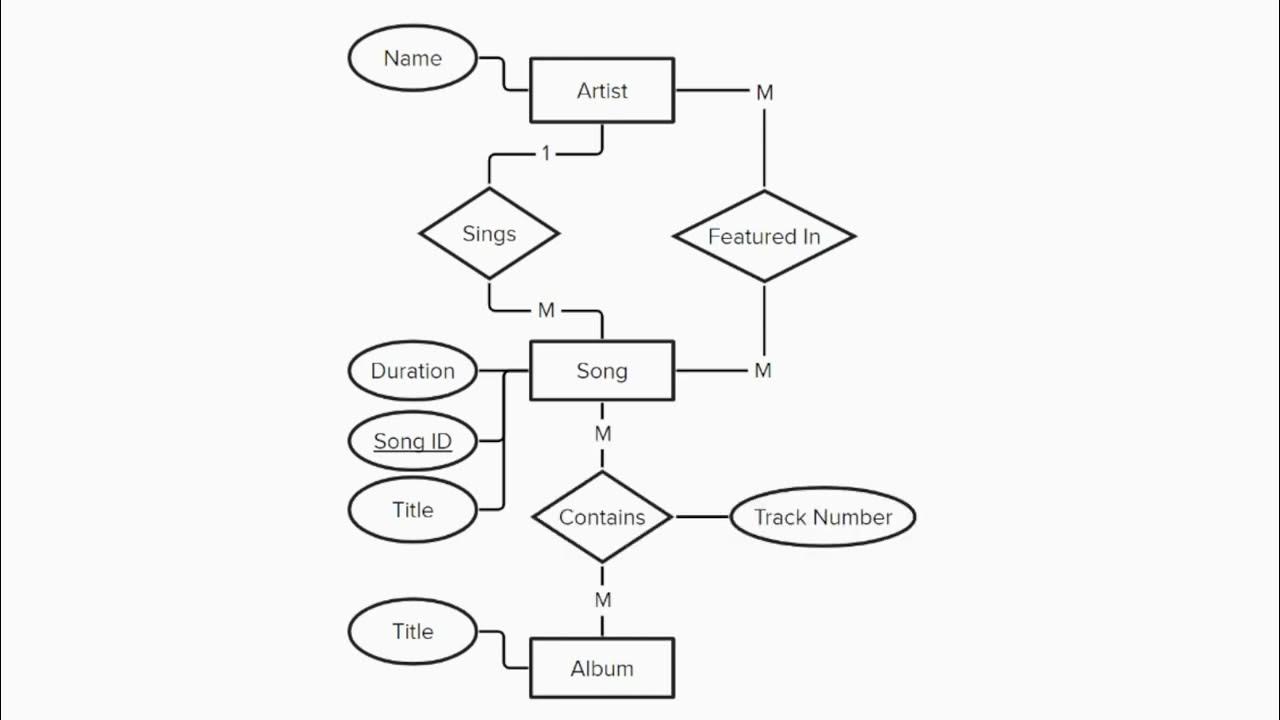Bancos de Dados - Aula 03 – Modelo Entidade-Relacionamento (MER) - Parte II
Summary
TLDRIn this third lesson on database modeling, Sara introduces key concepts of Entity-Relationship models, focusing on relationships and cardinalities. She explains how relationships link entities in a database, using heuristics like actions between entities (e.g., employees managing departments or working on projects). The lesson covers different types of relationships, including binary, ternary, and recursive, and discusses cardinalities (one-to-one, one-to-many, many-to-many) to set constraints on the relationships. The importance of participation restrictions—total or partial—along with relationship attributes, is also explored, providing a clear guide to modeling real-world business scenarios.
Takeaways
- 😀 Entities, attributes, and keys were covered in the previous lesson, while this lesson focuses on relationships and cardinalities.
- 😀 Relationships in data modeling express associations between entities, often represented as verbs or actions in natural language descriptions.
- 😀 A heuristic for identifying relationships involves looking for actions in the real-world context that link entities.
- 😀 Relationship types can vary in degree: binary (two entities), ternary (three entities), and n-ary (n entities), with binary being the most common.
- 😀 Recursive relationships involve an entity taking on multiple roles, like a supervisor and supervisee within a single entity type.
- 😀 Cardinality specifies the number of instances of a relationship that an entity can participate in. The main cardinalities are one-to-one, one-to-many, many-to-one, and many-to-many.
- 😀 One-to-one cardinality means each instance of one entity is linked to exactly one instance of another entity, such as a department being managed by one employee.
- 😀 One-to-many cardinality means one entity can be linked to multiple instances of another entity, such as a department having multiple employees.
- 😀 Many-to-many cardinality means multiple instances of two entities are related, such as employees working on multiple projects and projects having multiple employees.
- 😀 Participation constraints specify whether an entity must participate in a relationship (total participation) or can optionally participate (partial participation), represented in ER diagrams by solid or dashed lines.
Q & A
What are the two main elements introduced in this lesson on Entity-Relationship Models?
-The two main elements introduced in this lesson are relationships and cardinalities in the context of Entity-Relationship (ER) models.
How are relationships typically expressed in an ER model?
-Relationships in an ER model are typically expressed through actions that involve entities, such as a 'works for' relationship between employees and departments.
What heuristic is suggested to help identify relationships in the model?
-The heuristic suggested is to look for actions expressed in the real-world description, as they often correspond to relationships between entities.
What does the 'works for' relationship in the example represent?
-The 'works for' relationship represents the action of an employee working for a department.
What is the difference between a binary, ternary, and n-ary relationship in ER modeling?
-A binary relationship involves two entities, a ternary relationship involves three entities, and an n-ary relationship involves n entities, where n can be any number.
What is a recursive relationship, and can you give an example?
-A recursive relationship occurs when an entity participates in a relationship with itself, assuming different roles. For example, an employee who supervises other employees is a recursive relationship.
What is the significance of cardinality in an ER model?
-Cardinality specifies the maximum number of instances of a relationship that an entity can participate in, helping to define constraints such as one-to-one, one-to-many, or many-to-many relationships.
What does a one-to-one cardinality imply in an ER model?
-A one-to-one cardinality means that each instance of one entity is associated with exactly one instance of another entity. For example, one employee manages one department, and each department has only one manager.
Can you explain the concept of participation in a relationship and its relevance?
-Participation in a relationship refers to whether an entity is required to participate in a relationship (total participation) or if it's optional (partial participation). This is represented with double or single lines in the ER diagram.
What does a 'many-to-many' cardinality mean, and how is it represented?
-A many-to-many cardinality means that multiple instances of one entity can be related to multiple instances of another entity. For example, multiple employees can work on multiple projects, and a project can involve multiple employees. It is represented using the 'M:N' notation in ER diagrams.
Outlines

This section is available to paid users only. Please upgrade to access this part.
Upgrade NowMindmap

This section is available to paid users only. Please upgrade to access this part.
Upgrade NowKeywords

This section is available to paid users only. Please upgrade to access this part.
Upgrade NowHighlights

This section is available to paid users only. Please upgrade to access this part.
Upgrade NowTranscripts

This section is available to paid users only. Please upgrade to access this part.
Upgrade Now5.0 / 5 (0 votes)





